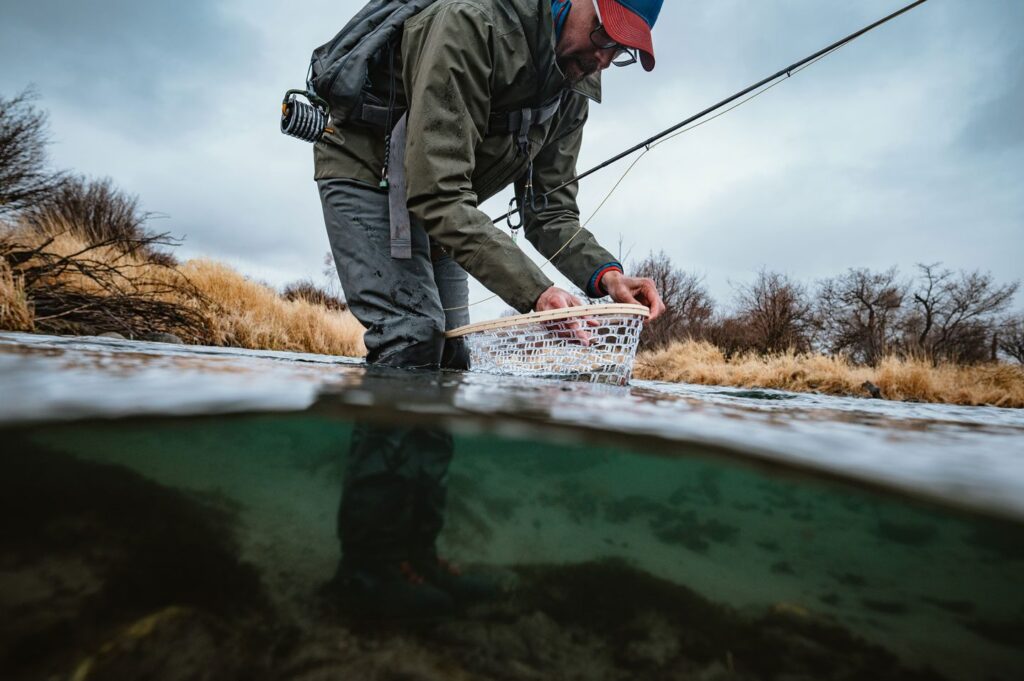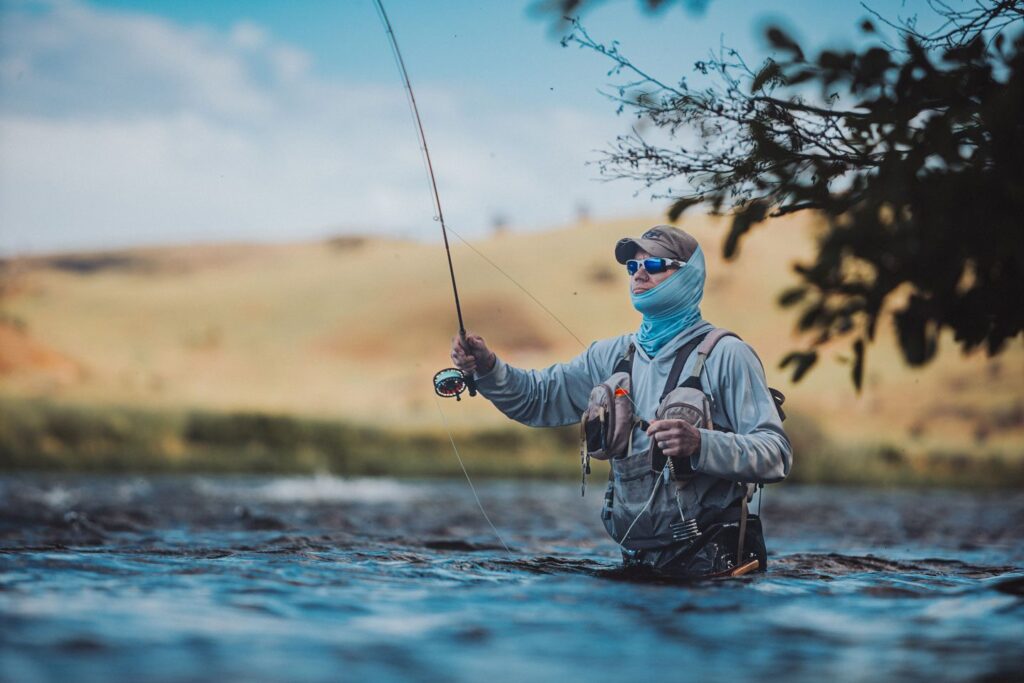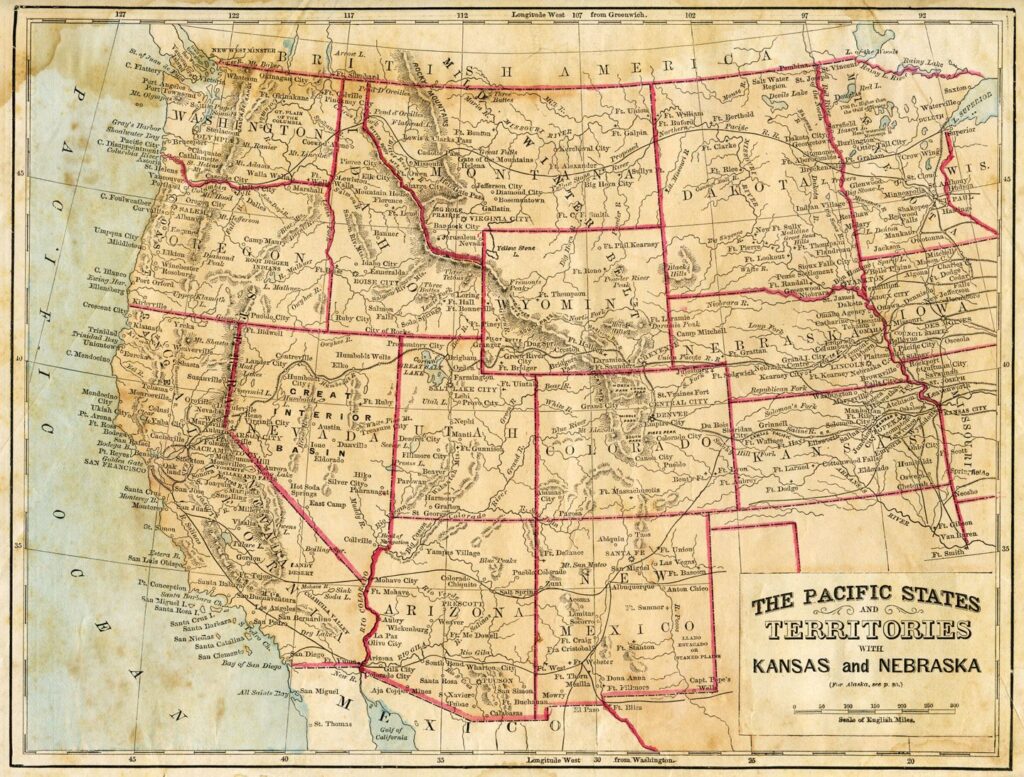
As the winter chill fades and the first signs of spring begin to bloom, experienced anglers know it’s time to get ready for another exciting fly fishing season.
Spring fly fishing offers unique chances and challenges that need the right gear, techniques, and an understanding of how the water behaves at this time of the year. Whether you want to improve your skills, find new spots, or connect with other anglers, this guide will help you make the most out of your spring fishing adventures.
Essential Gear for Spring Fly Fishing
Having the right gear is essential for a successful fly fishing experience. If you already have your gear, it’s still a good idea to check it to make sure you’re prepared for the season.
Spring can be unpredictable, with fluctuating temperatures and water levels, so having the right equipment will help you stay ahead. Here are some items you should have in your kit:
Fly Rod and Reel
Get a good-quality fly rod and reel that can handle a variety of fishing conditions.
Spring weather can change quickly, so having a versatile setup is crucial. Look for a rod with medium to fast action, which will give you control and power during casting. For the reel, find one with a smooth drag system that can handle both lighter and heavier fish.
Fly Line and Leaders
Make sure your fly line is right for the type of fishing you’ll be doing.
A weight-forward floating line is a great all-around choice for fly fishing, especially when you’re fishing on slower water or targeting fish that are near the surface.
Additionally, stock up on leaders and tippets in various sizes to match different flies and water conditions. This is important as you may need a lighter leader for delicate dry flies or a stronger one for larger streamers.
Flies
Spring is a time when insects are most active, so having a diverse selection of flies is essential. You’ll want nymphs, dry flies, and streamers that mimic the local insect hatch.
Popular spring patterns include March Browns, Blue Winged Olives, and Woolly Buggers. In the early season, a pheasant tail nymph can be very effective in catching fish, as it mimics mayfly larvae, which are a key food source for many species.
Make sure to have a variety of sizes in your fly box, as fish can be picky about what they eat.
Waders and Boots
Cold spring waters can be challenging to navigate, so having breathable waders and sturdy boots is a must.
Look for waders with reinforced knees and gravel guards to protect against sharp rocks and rough terrain.
Boots with a reliable grip are important, especially when you’re wading in slower water or trying to reach deeper fishing spots. The right pair of boots will give you better balance and prevent slipping on slippery rocks.
Accessories
Don’t forget the smaller items that can make a big difference in your fishing experience.
Polarized sunglasses are a must, as they reduce glare from the water, making it easier to spot fish.
A quality landing net will help you safely handle and release the fish you catch.
A fly box to organize your flies and a multi-tool for various tasks, like cutting line or fixing equipment, are also important.
Advanced Fly Fishing Techniques

Spring fishing requires different techniques than other seasons.
With changing weather, fluctuating water levels, and an increase in insect activity, you need to adapt your approach.
The fish are also more active, so understanding their behavior can help you target them better. Here are some advanced techniques to help you succeed during spring:
Nymphing
During the early season, when the water is still cold, fish tend to stay near the bottom, looking for food that has sunk.
Nymphing is a great way to catch these fish. Use weighted nymphs or add split shot to your line to get your flies to the right depth.
Pay attention to your indicator and be ready to set the hook at the slightest sign of a fish taking the fly. In this time of the year, fish are often more sluggish, so you need to be patient.
Dry Fly Fishing
As the temperatures rise and insects begin to hatch more frequently, dry fly fishing can become a very productive technique.
Pay attention to the types of insects hatching in the area and match the hatch with your fly pattern choices.
When casting, focus on a natural drift and avoid spooking the fish.
Practice casting techniques like roll casts and overhead casts to present your flies delicately. This technique is perfect in areas where water flows more slowly, especially when fish are feeding on the surface.
Streamer Fishing
Anglers appreciate fly fishing for its versatility and ability to adapt to various environments. Whether fishing in calm freshwater streams or challenging saltwater flats, fly fishing offers an immersive way to connect with nature.
It’s an excellent way to explore the great outdoors while developing skills and experiencing the thrill of catching fish in diverse settings.
Reading the Water
Spring runoff can cause water levels to fluctuate, and the current may change rapidly.
Spend time studying the water before you cast. Look for spots where fish are likely to be, such as near structures like rocks, logs, and undercut banks.
Fish are also often found in seams where faster and slower water flows meet. These areas offer fish the opportunity to rest and feed without having to work too hard against the current.
Adapting to Weather
Spring weather can change quickly, with sudden shifts in temperature, wind, and rain.
Be prepared to adjust your techniques and gear based on the conditions. Layer your clothing so that you can stay comfortable in warmer or cooler temperatures. Don’t forget to pack rain gear, as unexpected showers are common in spring.
Having the right gear and being adaptable will make your fishing experience more enjoyable, no matter what the weather brings.
Top Spring Fly Fishing Locations

Exploring new fishing spots is one of the best parts of fly fishing. Here are some great locations that offer fantastic fishing opportunities for those looking to have an adventure:
Madison River, Montana
Known for its diverse insect hatches and abundant trout, the Madison River is a top destination for fly fishing.
The upper section, called the “50 Mile Riffle,” offers excellent opportunities for both nymphing and dry fly fishing. The slower water in this area allows for delicate fly presentations.
Driftless Area, Wisconsin
The Driftless Area is a popular place for fly fishing, especially for those who enjoy fishing spring creeks and limestone streams.
The unique geology of the area creates nutrient-rich waters that support healthy wild trout populations, and the slower water is perfect for working dry flies and nymphs.
White River, Arkansas
Famous for its trophy-sized brown trout, the White River is a top spring destination.
With rising water temperatures, fish become more active in the spring, and there’s a better chance of landing a big fish.
The clear water makes it a perfect place for streamer fishing, and the slower water in certain areas offers great opportunities for nymphing.
North Umpqua River, Oregon
The North Umpqua River is a beautiful, clear water destination that offers both steelhead and trout opportunities.
Known for its spring steelhead runs, this river’s crystal-clear waters allow anglers to sight-fish in some sections, while slower water areas are perfect for targeting trout with dry flies.
Penns Creek, Pennsylvania
One of Pennsylvania’s premier fly fishing spots, Penns Creek is known for its prolific insect hatches. During spring, the Green Drake hatch draws anglers from all over the country.
The combination of fast and slower water sections makes it an excellent location for nymphing, dry fly fishing, and streamer fishing.
Community and Camaraderie
Fly fishing is more than just a solitary pursuit; it’s a chance to connect with fellow anglers and share your passion. Building a sense of community can enhance your fly fishing experience and provide valuable insights and support.
Fly fishing is more than just about catching fish—it’s also about connecting with other anglers and sharing your passion for the sport. Building a sense of community can enhance your experience and help you learn from others. Here’s how you can get involved:
Join a Fly Fishing Club
Many regions have local fly fishing clubs that organize events, workshops, and outings.
Joining a club is a great way to meet other anglers, exchange tips, and be part of conservation efforts. These clubs often host group fishing trips, which are a fun way to explore new waters.
Attend Fly Fishing Expos and Shows
Fly fishing expos and shows are excellent opportunities to meet industry experts, check out new gear, and attend seminars on techniques like nymphing, dry fly fishing, and streamer fishing. These events often feature guest speakers, casting demos, and fly tying competitions that will enhance your skills.
Engage on Social Media
Social media is a great place to stay connected with the fly fishing community. Follow popular fly fishing accounts, join online groups, and share your fishing experiences with others.
You’ll stay updated on trends, get gear recommendations, and connect with anglers who share your interests.
Volunteer for Conservation Projects
Many fly fishing organizations work on conservation projects to protect and restore rivers and fish populations.
Volunteering for these efforts is a great way to give back to the sport and the environment. It’s also a great way to meet other anglers who care about preserving the sport for future generations.
Organize Group Trips
Plan fishing trips with friends or fellow club members to explore new waters together. Group trips can be a great way to learn from others and share new fishing spots. They also give you a chance to bond with fellow anglers and create lasting memories.
Conclusion
Spring fly fishing is an exciting time of the year, offering unique challenges and opportunities.
By getting the right gear, mastering advanced techniques like nymphing and dry fly fishing, and exploring new fishing locations, you’ll make the most of this season.
Whether you’re hoping to catch a big fish or just enjoy a relaxing day by the water, remember to stay connected with the fly fishing community and share your passion.
Other Blogger:
Midcurrent
Guide Recommended
